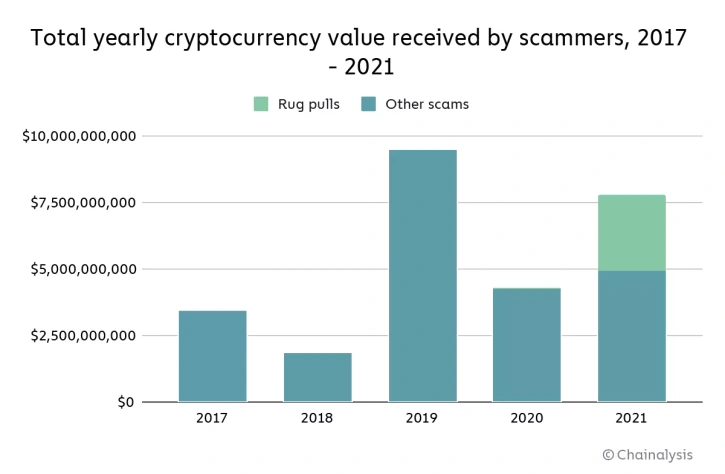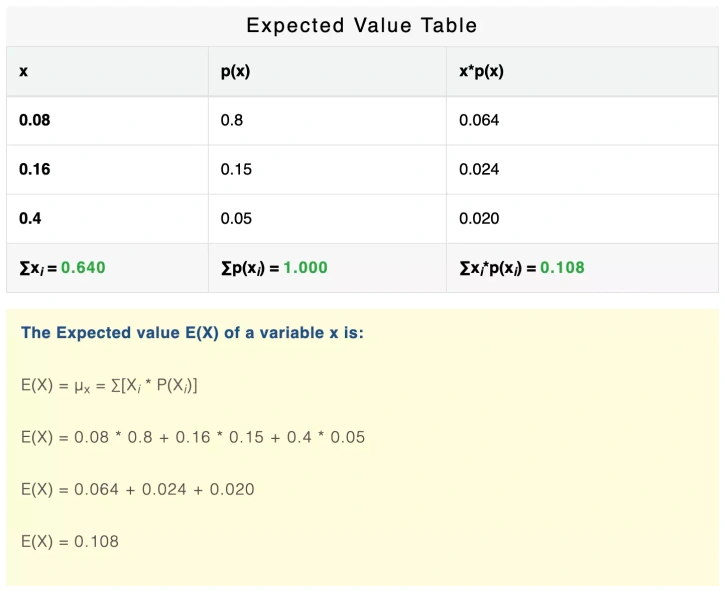Refunds for Rug Pulls? What ERC721R Gets Wrong

Scams and rug pulls are a problem for cryptocurrencies and NFTs. ERC721R is offering a solution, but will it work?
ERC721R is a new contract upgrade that adds an extra layer of utility (and supposedly security for minters) to ERC721, the current standard for representing non-fungible token ownership. If you've ever interacted with an Ethereum-based NFT, it's likely you were interacting with an ERC721 token.
ERC721R introduces a way for an NFT project to automatically offer refunds to buyers for a certain period of time after its official mint. In the example offered by CryptoFighters Alliance on Twitter, an NFT project can offer a 100 percent guaranteed refund for up to 45 days after mint. The buyer doesn't have to request a refund. She can simply return the NFT to the original minting contract during the refund period and her ETH will return to her wallet.
But why do we need this added layer of safety for minters? Rug pulls, which is when a DeFi or an NFT project makes promises to its potential buyers that it doesn't plan on keeping and runs off with all the ETH collected during its launch or mint never to be seen again, are the latest in a long history of cryptocurrency and web3-related scams. And it looks like it could get worse in 2022.
In 2021, over $7.5 billion was stolen from unsuspecting users via cryptocurrency-based crime, according to Chainalysis. Of that $7.5 billion, nearly $3 billion of the recorded scams were rug pulls. This is the second largest year for web3-related scams behind only 2019, in which nearly $10 billion was stolen.
Despite its good intentions, ERC721R is unlikely to help fix the rug pull problem. Here's what it gets wrong:
1. Most rug pulls are DeFi projects.
Rug pulls are a bigger problem in DeFi. All but one rug pull recorded by Chainalysis in its scam summary report involved DeFi projects and protocols (the one that wasn't a DeFi project or protocol was actually a centralized exchange called Thodex -- the CEO disappeared and halted users' ability to withdraw funds).
These projects and protocols sell tokens to users, and ERC721R doesn't fix this problem.
The Chainalysis report seems largely unconcerned with the NFT space, and using this data to push the ERC721R narrative seems a bit disingenuous. But that doesn't mean NFT rug pulls aren't still a problem for some users.
But ERC721R still doesn't solve that problem effectively.
2. Guaranteed refunds misunderstand rarity and expected floor price, make all NFT mints +EV, and complicate market conditions.
Most popular NFT projects have assets that are more and less rare. By offering a full refund on NFTs for weeks after mint, projects using this method are misunderstanding the buyer's risk-reward ratio.
The floor price of an NFT project after mint should decrease if the original mint price represents the true value of the project. Why? Because there's a chance to hit on a rare or super rare asset.
Let's look at the expected value of an NFT project with three varying levels of rarity: common, rare, and super rare. Common NFTs make up 80 percent of the project, rare 15 percent, and super rare 5 percent. Let's assume the mint price is 0.08 ETH and a rare NFT will go for double the price of mint (0.16 ETH). Let's also assume a super rare NFT will go for five times the price of mint (0.4 ETH).
The calculation for expected value looks like this: EV=∑𝑃(𝑋𝑖)∗𝑋𝑖
EV stands for expected value. P(Xi) is the probability of a certain value occurring. And Xi is all the possible outcomes.
Don't get lost in the math. It's simple. The expected value of this bet is the sum of all the prices of each NFT rarity multiplied by the probabilities of you getting that rarity.
Assuming there is a full refund for a certain time period after mint, the expected value of minting this NFT project is (0.08 * 0.8) + (0.16 * 0.2) + (0.4 * 0.05), which comes out to 0.108 ETH per mint. That means for every NFT I mint, I can expect to return 0.108 ETH, or 0.028 ETH in profit.
If I get a common NFT, I return it to the project's founders for a full refund, but if I get a rare or super rare NFT, I sell it on the secondary marketplace for a profit. Minting becomes +EV... for every single NFT project that offers a full refund.
The floor price should actually be 0.045 ETH post mint, which brings the expected value of minting an NFT to 0.08 ETH, which is the same as the original mint price.
This can be somewhat solved with partial refunds, but it still complicates markets and confuses buyers. And an NFT project that is planning to rug its buyers is likely fine with only making 50 percent of the total mint.
Refunds also lead to misleading floor prices and puts buyers at risk of pump and dump schemes.
3. Misleading 'protected' floor prices can lead to predatory pump and dumps.
Refunds can artificially inflate floor prices for a certain period of time, but eventually, the floor will crash without real demand.
ERC721R tokens could lead to a dangerous game of musical chairs, in which minters hold for as long as possible (knowing they'll get a refund if the floor price drops in value) and look to dump their NFTs off on unsuspecting secondary marketplace buyers before the refund period is over.
The ERC721R official website says it ensures "protected floor prices" and "low risk purchases" for buyers, but it also increases risk for buyers on the secondary marketplace due to misleading floor prices and increases the likelihood of predatory tactics by whales and pump and dumpers.
If risk is removed from the equation during mints, whales, or accounts with a lot of ETH, will buy as many as possible and if the project does not go up in price or they don't get rare and super rare NFTs, they'll just take the refund. These accounts likely have no interest in the NFT projects they're buying, as all projects who issue refunds are +EV.
This is long-term bad for NFT projects because demand is removed after the refund period is up and the price tanks or minters already took a refund on their purchase. They're also not able to build legitimate communities because the entire event becomes a pump and dump for whales, scammers, and shillers. And this all happens because of a lack of risk.
4. Risk is part of the game.
This might not be a popular opinion amongst those who've been rugged in the past, but risk is a part of the game.
Without risk, indifferent investors and traders swoop in to risk-free opportunities and exploit the situations at the expense of unsuspecting newcomers until new risk is introduced and the risk-reward ratio evens out. Then investors and traders have to actually have confidence in their investments and trades again.
Imagine a stock without downside. Let's say Apple starts offering refunds if its stock price decreases within 45 days of your purchase. Are you going to buy it? Of course. What if the company was Orange, an Apple competitor with zero track record? Still, of course. Because the company or project doesn't actually matter to you. The only thing that matters is that the situation is entirely +EV.
But as soon as the refund period is coming to an end, what are you going to do with Orange? Dump it as fast as possible because it's actually a terrible company, or if the price went down, take the refund.
Rug pulls suck. It's sad, infuriating, and scary when people lose hundreds or thousands of dollars in seconds. And the web3 space should come up with creative solutions for protecting buyers and legitimate builders and creators.
But refunding buyers is riddled with irreparable problems. It simply shifts the potential danger of rug pulls from the minter to the secondary buyer. And in doing so creates a potentially worse environment for the NFT and web3 newcomers and genuine projects.

